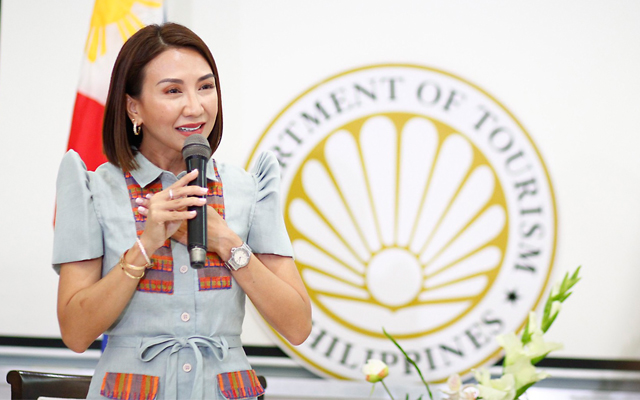Marking her second week as the secretary to the Philippine Department of Tourism (DoT), Christina Garcia Frasco has laid down targets and objectives that are aligned with the recent pronouncement of president Ferdinand R Marcos Jr on the need to improve tourism infrastructure and introduce proactive policies to boost the country’s tourism industry.
DoT objectives include improvement of tourism infrastructure and accessibility; a cohesive and comprehensive digitalisation and connectivity; enhancement of the overall tourist experience; equalisation of tourism product development and promotion; diversification of portfolio through multi-dimensional tourism; maximisation of domestic tourism; and strengthening tourism governance through close coordination with local government units (LGUs) and stakeholders.

Frasco stressed on the need to anchor these objectives on three focus points – connectivity, convenience, and E(Quality).
In terms of connectivity, efforts will go into tourism clustering or establishment of regional tourism circuits that allow bigger provinces and more well-known destinations to be experienced together with smaller islands.
Attention will also be given to improving end-to-end transportation by land, sea, and air from arrival to departure, and reviewing the availability and affordability of these routes.
Frasco explained: “While it’s true that we do have available international airports at certain gateways across the Philippines, the reality is that many of these airports are simply not yet of the global standard that would put us at par with our direct competitors in the ASEAN member nations. Second, there’s also a need to revisit the capacity of these airports as that will greatly determine whether or not there would be an addition of direct flights to our tourist destinations.
“And finally, the availability of seaports. So, there is also a necessity to identify and study which particular tier one and tier two tourism destinations are still in need of ports of entry or need of improvement as far as ports of entry is concerned.”
In terms of convenience of travellers, uniformity of protocols will be sought through inter-agency collaboration. The DoT will also work on the enhancement of tourist experiences through the establishment of tourist service centres and rest areas across the regions.
The DoT chief also hailed president Marcos’ desire to improve healthcare facilities particularly in key tourist destinations, noting that “this can be done in coordination with LGUs as well as private hospitals providers to ensure availability of high-quality emergency and tertiary care when needed”.
With the president’s desire to spread economic opportunities to LGUs across the country, Frasco emphasised the importance of enhancing E(Quality) with focus on the equalisation of overall tourism product development and promotion across the regions, and encompassing tourism standards, accreditation, and inclusive development.
The DoT aims to accomplish this through multi-dimensional tourism that harnesses the country’s potential in nature-based tourism, business events, heritage and culture, food tourism, health wellness and retirement, and the arts.
She added that the government will provide technical guidance on how “the richness of our heritage and the vastness of our culture” can be packaged to compete with the finest offered in other countries.
Meanwhile, the DoT will maintain its focus on domestic tourism and facilitate cross province collaboration and the establishment of tourism circuits across the regions. It will conduct an extensive site and product mapping, particularly on areas not yet given equal opportunity for attention and development.




















